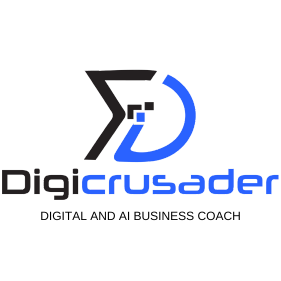Decision-making is an exceptionally critical skill that shapes our personal and professional lives. Whether a business leader, project manager, or any other individual trying to make their way through daily decisions, a robust set of decision-making frameworks can notably enhance your ability to come up with effective decisions. In this comprehensive guide, we shall review 40 of the best decision-making frameworks you can master to unlock success.
40 Best Decision-Marketing Frameworks
1. SWOT Analysis
Strengths, Weaknesses, Opportunities, and Threats (SWOT). Basically, SWOT analysis is one strategic planning tool for the identification of internal and external factors, which may be favourable or unfavourable to an objective. Using this approach of four classes, you could build up a clear strategy for your decisions. In particular, it is very useful for strategic planning and competitive analysis. This framework therefore helps in the identification of ways in which the organization can make use of its strengths and opportunities while minimizing weaknesses and threats.
2. PEST Analysis
Political, Economic, Social, and Technological (PEST) analysis helps one gain an understanding of the macro-environmental factors that may influence an organization. The framework, therefore is only useful for making sound strategies while making a decision and for long-term planning. Therefore, a firm will be in a position to forecast the market trends and maintain conformance with the change in regulations or lead over the competitors.
3. The Eisenhower Matrix
It is one framework that helps in prioritizing work as per urgency or importance. It will help you take categorical decision on what to do, what to delegate, and what to eliminate from the chores in your hand. The matrix helps in managing time more professional and gives important chores their due time for deliberation hence increasing productivity.
4. The OODA Loop
Observe, Orient, Decide, Act (OODA) is a model that finds its origin in military but has its roots in business. Key to the model is the observance of the environment and super-fast acting. When cycled time and again in constant repetition, it can help organizations be agile and make decisions in time within dynamic environments.
5. Decision Trees
A decision tree is a diagram that represents options available to a decision, conditional on certain occurrences. It shows the consequences of each decision and the preferable path to take. Decision trees are most useful in complex decision-making processes where multiple scenarios are involved.
6. The Pareto Principle
Also referred to as the 80/20 rule, it assumes that 80% of all results come from 20% of efforts; this view helps to draw out the most important things to consider in effective decision-making. It is effective in enabling individuals and organizations to save time by focusing on key tasks with the most impact and therefore bringing in more efficiency and results.
7. Cost-Benefit Analysis
This quantitative approach to decisions, making assess all costs and benefits of making a decision in order to establish how advantageous a decision or a solution to a problem will be. It is of most help when it comes to decision-making that affects finance. By weighing the advantages and disadvantages of a particular course of an action in terms of monetary value, it is possible for an organization to choose whether the bennefits will out-way the costs and make best decisions that will not hurt its financial position.
8. Six Thinking Hats
This was created by Edward de Bono, a framework that incites examination of a decision from six different perspectives: factual, emotional, optimistic, pessimistic, creative, and control. It furthers holistic thinking. By wearing different “hats,” individuals can put themselves in different angles in a decision, which would give them results that are more balanced and creative.
9. The Delphi Method
It is a structured communication technique which uses a panel of experts to give input towards an issue under consideration. The purpose is to solicit a consensus, primarily found after several rounds of questioning and feedback. These techniques are very handy in solving complex problems and forecasting. They utilize collective experiences and contempt individual biases.
10. The Vroom-Yetton Decision Model
This model, therefore determines how much involvement of subordinates should be solicited in the decision-making process. It is based on situational approach to leadership and it thus instructs on arriving at the most proper leadership style to make a decision. Putting decision significance criteria, expertise of team, and time constraints into consideration, more effective and participative decision making can engage the leaders themselves .
11. The RAPID Framework
Recommend, Agree, Perform, Input, Decide (RAPID) tool that may be used to clarify the roles and responsibilities in a decision-making process, letting everyone know the person’s part in arriving at a decision. By defining who is responsible for each step, RAPID minimizes confusion and streamlines the act of reaching a decision.
12. Force Field Analysis
Developed by Kurt Lewin, this framework enables to identify and analyze the forces that are for and against the implementation. It is an aid to understand the dynamics of the implementation and therefore act accordingly. Organizations may strategize ways of making the forces favorable towards the change and minimizing the forces of resistance by representing the forces through a diagram.
13. The PDCA Cycle
Plan, Do, Check, Act (PDCA). One of the iterative four-step methods of management where the process and product are continuously improved upon is the PDCA. It is also known as the Deming Cycle. With this cycle, there is developed a culture of ongoing improvement that ensures an organization is capable of adjusting according to the changes in conditions and challenges.
14. The Fishbone Diagram
Also known as the Ishikawa or cause-and-effect diagram, it is a tool for determining root causes. It is very useful in quality management and troubleshooting. Through organizing the probable causes, the fishbone diagram allows a more structured analysis and is something a user could refer to for uncovering the underlying factors.
15. Mind Mapping
Mind mapping is a visualisation technique to bring diagram between written ideas and their relationship. It is helpful in organising one’s thought and analysis of a consideration of different issues necessary in making a decision. During brainstorming activities mind maps are used. Also during project planning and decision analysis because it enhances creativity and clarity.
16. The Five Whys
This iterative interrogative technique helps to find the root cause of the problem by questioning “Why?” five times over. Each response lays the groundwork for the next question and hence results in further insights. It is simple but very effective in revealing root causes of problems and preventing reoccurrence.
17. Scenario Planning
Scenario planning is the creation of detailed narratives about potential future states that helps to make and get ready for the possible challenges and opportunities. Helps to formulate plans for organizations keeping in view the different possible scenarios and how we can manage uncertainties.
18. The Ladder of Inference
This model illustrates the method we use step-by-step to arrive at a decision from observation. This model helps in becoming aware of the elements of reasoning and helps us avoid jumping to a conclusion. By examining each of the rungs in the ladder, prejudice, and assumptions can be identified that may impact the options of decisions to be made by the decision-maker.
19. The Pareto Chart
This bar chart indicates the most significant causes in a data set. It is a tool to make decisions about quality control and what issues to apply problem-solving resources to. If focus is on the problems with the most impact, it can yield the maximum gain with the minimum effort.
20. The Balanced Scorecard
This is a strategy and management system through which business activities are aligned with the vision and strategy of an organization. It dwells on financial, customer, internal processes, and learning and growth perspectives. The balanced scorecard gives a comprehensive view of performance that dictates strategic decision making.
21. The Kraljic Matrix
This purchase portfolio model helps in the categorization, and administration of the company’s procurement– the model accounts for the perceived supply risk and the potential profit impact. From those two factors, a company can make procurement strategy determination. Categorizing items into strategic, leverage, bottleneck, and non-critical optimizes the buying decisions in organizations.
22. The GE-McKinsey Matrix
This multi-factor portfolio analysis tool helps in the assessment of business strength and market attractiveness of diversified business units. It is used as a tool to facilitate resource allocation and strategic planning. The potential of each unit is evaluated to enable the organization to decide relating to the matters of investment and divestment.
23. The Ansoff Matrix
The tool is also referred to as Product/Market Expansion Grid. It enables organizations to identify growth strategies through existing or new products and markets. The Ansoff Matrix provides four growth options, which are market penetration, market development, product development, and diversification. The organization will consider all those options and select the best method to grow.
24. The Cynefin Framework
This framework aids in making those judgments that need consideration with reference to the complexity of the situation. It characterizes matters under five contexts. These are simple, complicated, complex, chaotic, and disorder. The Cynefin Framework informs the decision-makers on selecting the right response measures to be followed consequently in the event of an issue. These measures present effective problem-solving.
25. The STAR Model
Situation, Task, Action, Result (STAR), a structured way to help a person answer behavioural interview questions, but one I will also share with you as an aid to making decisions from reviewing past experiences. Basically, it serves to peel off each of the situations into those four parts; one can reflect on what they did and the results that had come, or rather, to make improved decisions.
26. The SECI Model
This model of knowledge creation includes four processes: Socialization, Externalization, Combination, and Internalization. By this, one could actually come up with better decisions through using the sharing in the potentials owned. The SECI Model makes a transformation of tacit to explicit knowledge and from explicit to tacit as well, a dual way increase in the organization’s learning and also in the decision-making.
27. The BCG Matrix
The Boston Consulting Group allows scanning of product portfolios, and then investment decisions are made in respect of market growth and market share. The BCG Matrix locates the products and enables the allocation of resource and strategic planning by categorizing the products as stars, cash cows, question marks, and dogs.
28. The MoSCoW Method
This prioritization technique helps in categorizing tasks or requirements into Must have, Should have, Could have, and Won’t have. It’s useful in managing project scope. What the MoSCoW Method ensures is that critical requirements are placed first, and resources used on work that is incidental, but would be nice to have, as time allows.
29. The DACI Framework
Driver, Approver, Contributor, Informed (DACI) is a decision-making framework that describes people’s roles within an organization at the behest of making a decision. It is clear about responsibilities the process, and the results of a decision. DACI alleviates confusion and fosters accountability because it records who is brought in, to do what part.
30. The RACI Matrix
Responsible, Accountable, Consulted, Informed (RACI) is one of the tools that help describe roles and their responsibility while managing any project; it is a tool that fills the Gap between Responsibility and Accountability. The RACI Matrix helps in describing the role of the team members and enables them to work by efficient collaboration.
31. The V2MOM Framework
Developed by Salesforce, Vision, Values, Methods, Obstacles, and Measures (V2MOM) aimed at aligning teams/individuals with strategic objectives laid down by the company empowering teams/individuals to ably tackle set objectives through clear articulation of these five lettered things.
32. The GROW Model
It’s a coaching model consisting of four steps named as Goal, Reality, Options, and Will. It helps in goal setting and laying down the planning process in order to achieve the goals. GROW Model instigates a structured way of thinking and allows the individual in crossing any barriers and reaching towards their goal.
33. The SOAR Analysis
Strengths, Opportunities, Aspirations, and Results (SOAR) is a base on the positive dimensions this in turn helps develop strategies building out of strengths and opportunities. By focusing on the positive approach, SOAR strengthens a forward-looking approach to decision-making.
34. The FMEA Method
Failure Mode and Effects Analysis (FMEA) describes various potential failure modes in a system and the effects of these failures. This can be very useful in any type of risk management and quality improvement. It is possible to deal with situations on a proactive basis: the possible risks can be identified and reduced in the interests of the improvement of systems’ reliability.
35. The Pugh Matrix
Also known as decision-matrix method or Pugh concept selection, this is a technique that helps us compare a variety of choices with the help of a set of criteria in order to get to a final desired best option. The Pugh Matrix drives logical decision-making through comparison of choices with uniform criteria.
36. The CATWOE Analysis
This problem-solving framework involves determining Customers, Actors, Transformation process, Worldview, Owner, and Environmental constraints. It is utilized to analyze and designing processes regarding business operations. Considering these aspects, the CATWOE helps make complex problems understandable in much greater detail.
37. The Theory of Constraints
This management philosophy is based on the identification and management of the constraints that prevent a goal from being achieved; it is applied in the process of improving processes and increasing efficiency. If the most critical constraint is addressed, then any organization may achieve an improvement in the level of performance that is able to be achieved by this organization.
38. The TRIZ Methodology
Theory of Inventive Problem Solving (TRIZ) is the theory for a systematic approach to concisely understand and solve complex problems using the patterns of the invention. It draws on well-known principles and methods of solving problems systematically to provide a structured way to generate new innovative solutions.
39. The Kepner-Tregoe Method
This decision analysis and problem-solving mechanism consists of four steps: Situation Analysis, Problem Analysis, Decision Analysis, and Potential Problem Analysis. The Kepner-Tregoe encourages logical reasoning and getting through the decision from every aspect thoroughly.
40. The Lean Six Sigma
It is a combination of Lean Manufacturing and Six Sigma that provides breakthrough improvement in the performance of the company by reducing variation and eliminating waste in the company. Lean Six Sigma boosts the performance of the company, quality, and customer satisfaction by improving it through continuous enhancement.
Conclusion
Mastering these 40 decision-making frameworks can make any user very capable of making an informed and effective decision. Each framework brings new illumination and tools to assist a person in tackling decisions at different levels: strategic planning, daily management tasks, and others. Working these frameworks into your decision-making process can enhance critical thinking, drive efficiency, and ultimately unlock success in personal and professional life.
In a world thrust upon by the choices one makes, a fully equipped toolkit in decision-making cannot be more instrumental. The structures give form and insight to decisions taken with self-assurance and lucidity, from the most complex of issues at the business level to the simplest in daily life. Learn to master these, and deduce from their sharp sense of judgment. Only then will one be better positioned to handle the intricacies of life and those of business. Mastering these decision-making frameworks, therefore, will unlock your potential and give you the key toward a prosperous and rewarding future.











